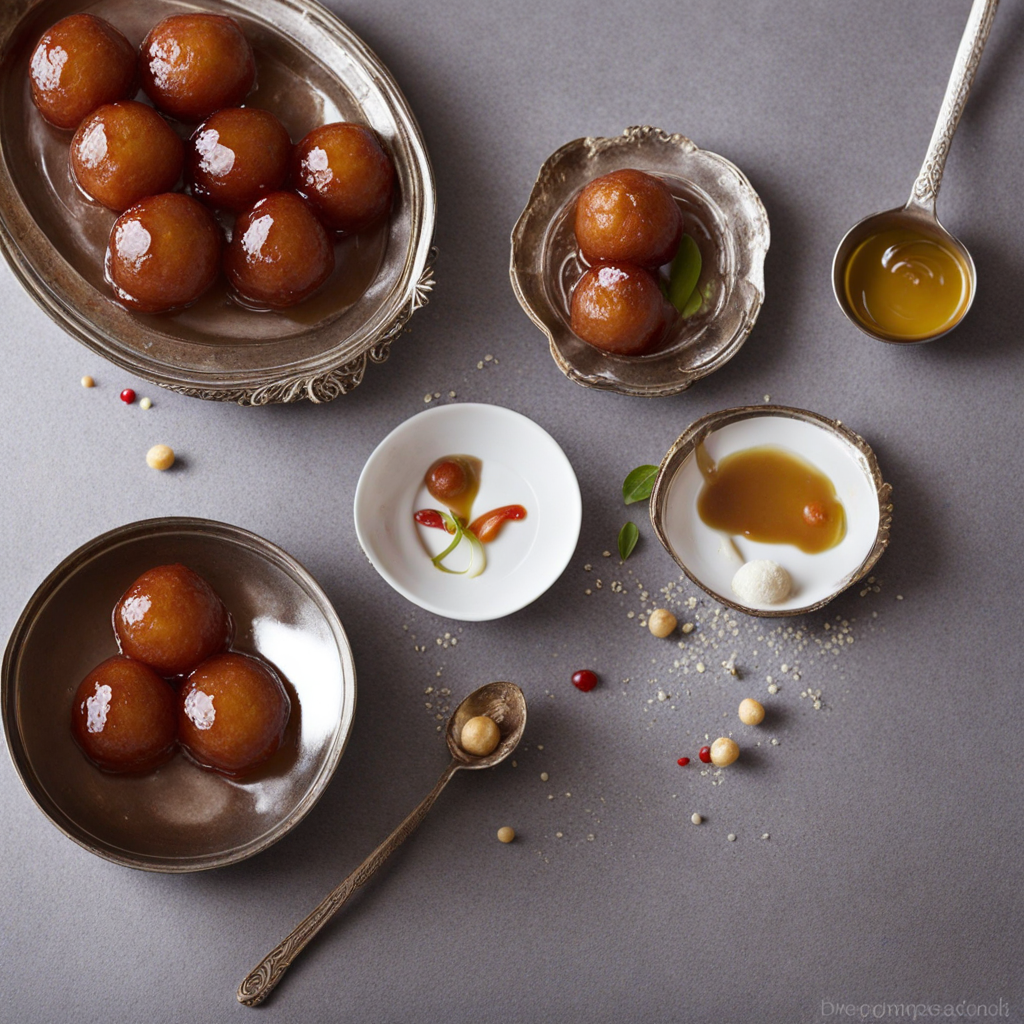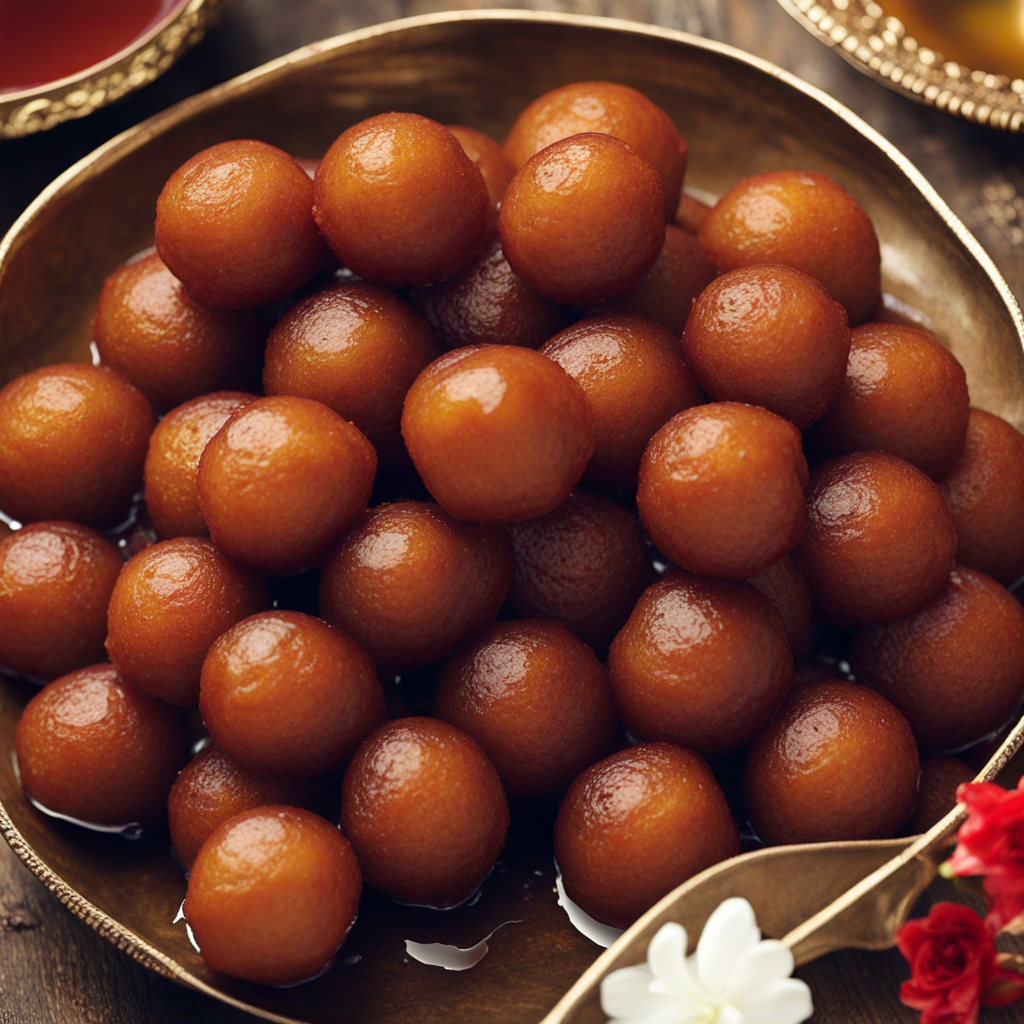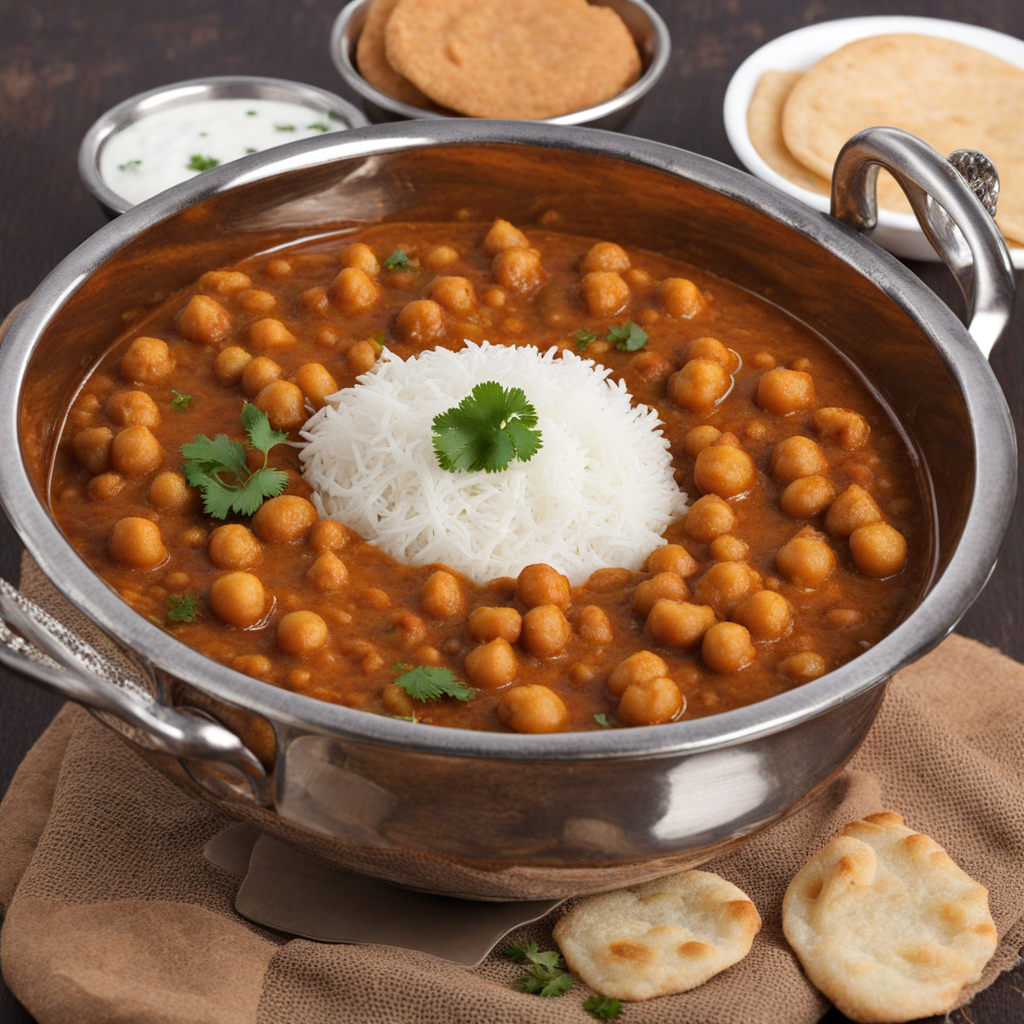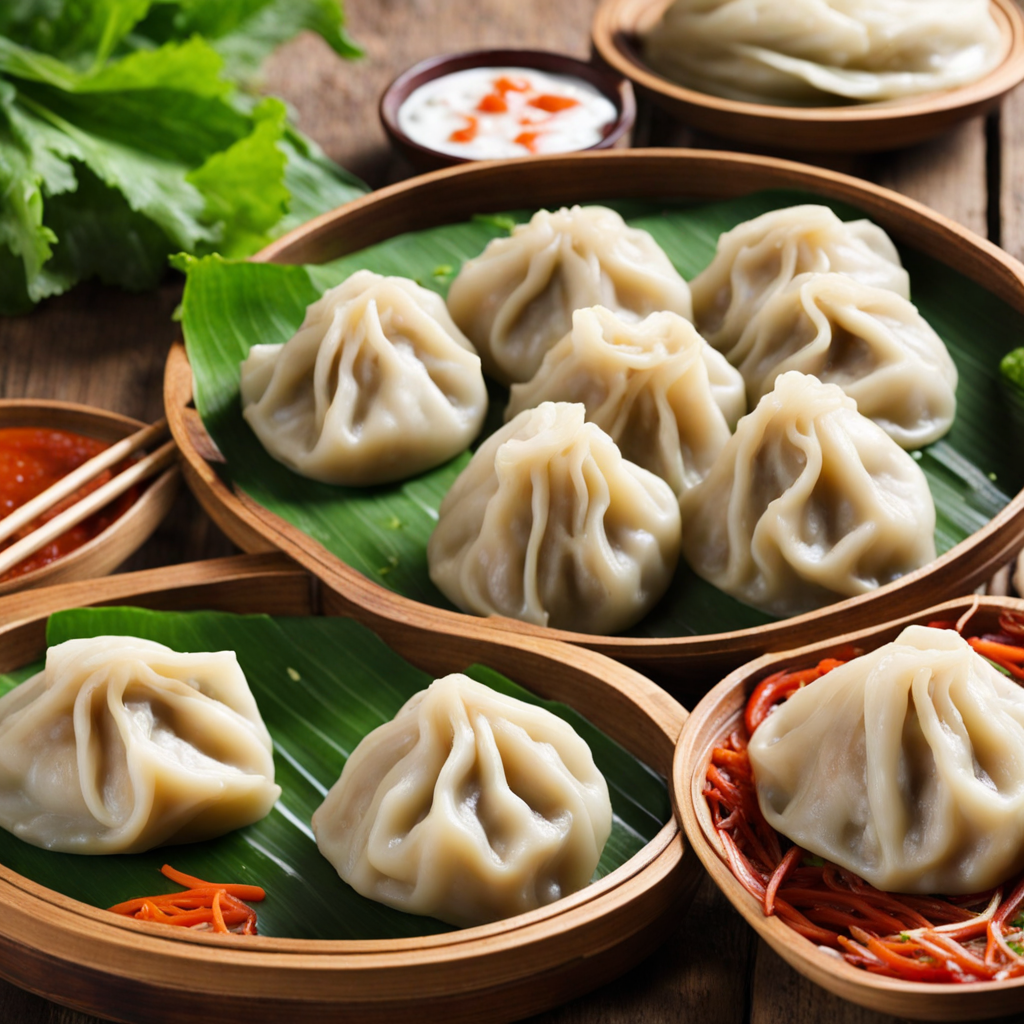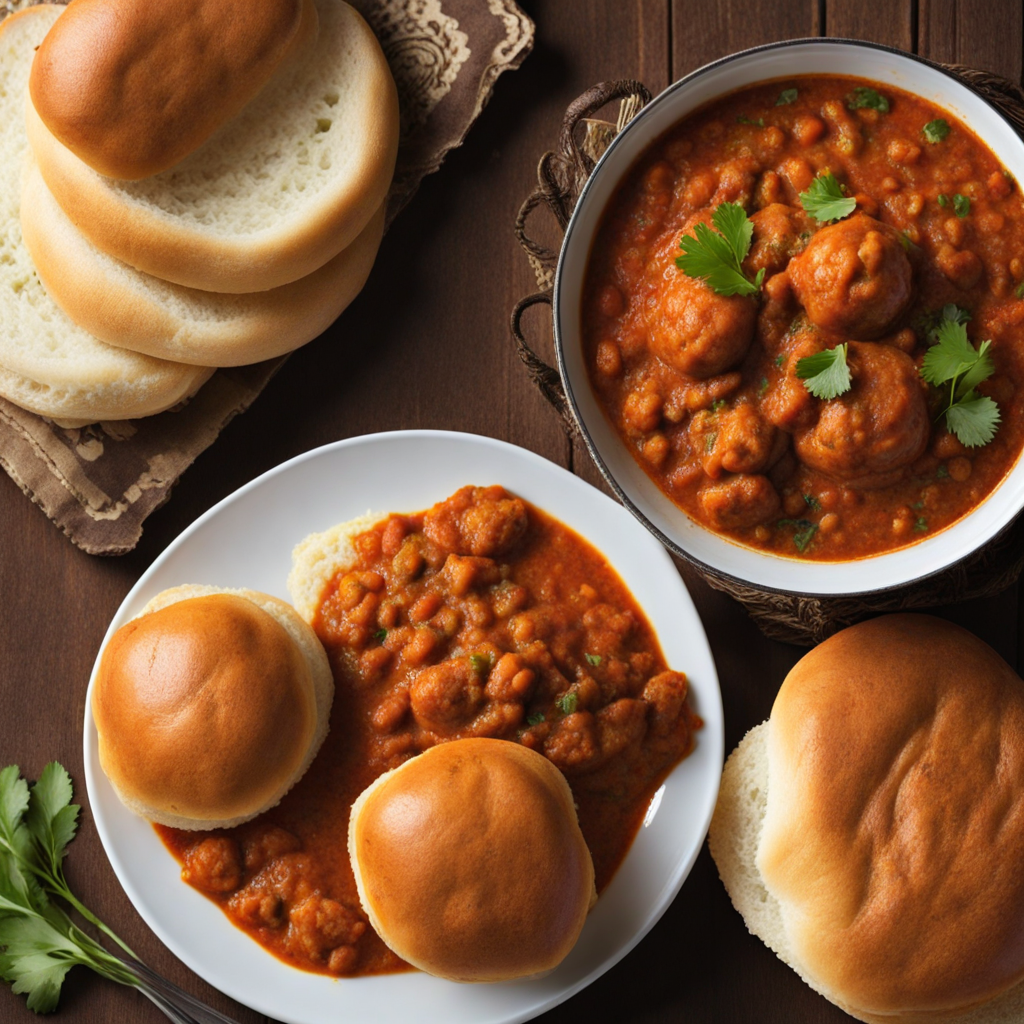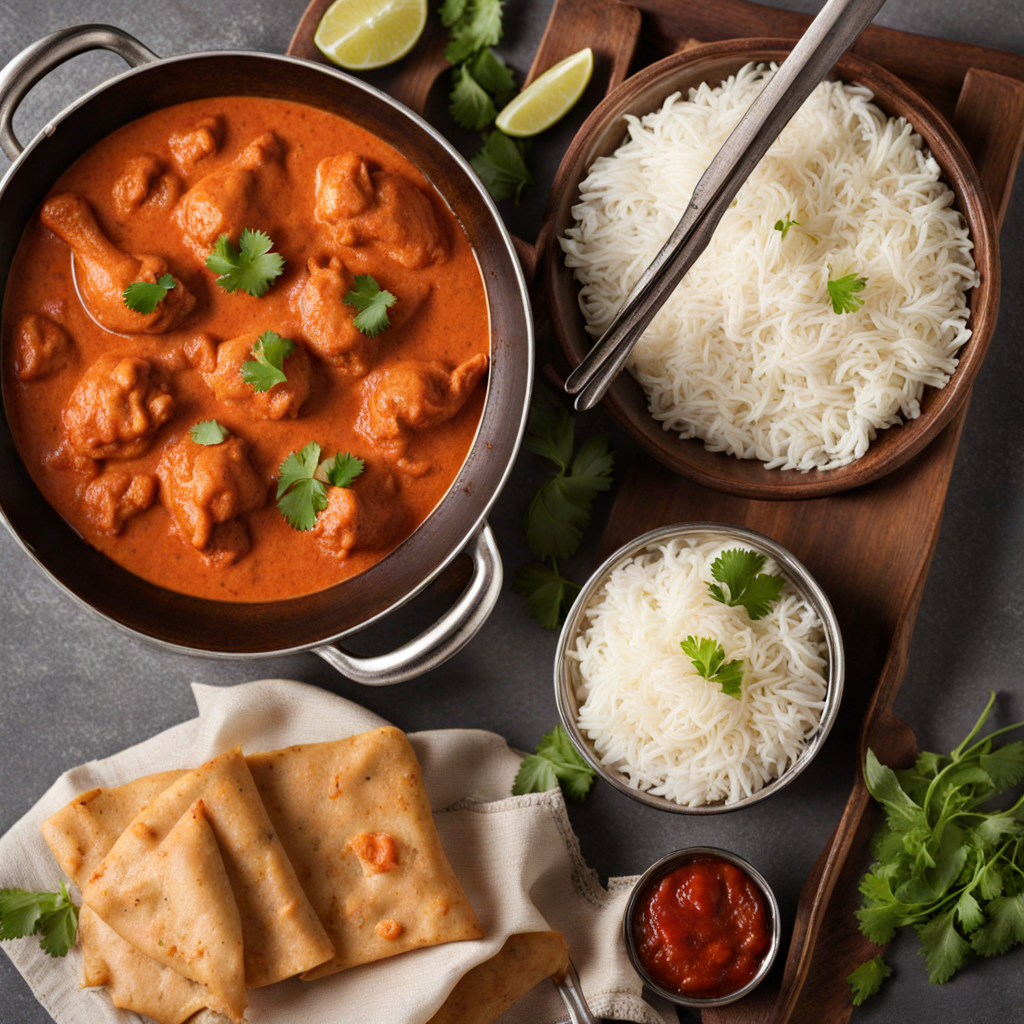Gulab Jamun
Gulab Jamun is a beloved Indian dessert that captivates the senses with its rich, sweet, and indulgent flavors. These small, round sweets are made primarily from khoya, a milk-based ingredient that is simmered and reduced to achieve a dense, creamy consistency. The dough is shaped into balls and deep-fried until they reach a golden brown hue. This frying process adds a delightful crunch to the exterior while keeping the inside soft and melt-in-your-mouth tender. Each bite reveals a luscious texture that is both comforting and satisfying, making it a favorite across various occasions and celebrations. What sets Gulab Jamun apart is its aromatic syrup, which is infused with cardamom and often a hint of rose water, providing a fragrant and floral note that beautifully complements the sweetness of the dessert. After being fried, the balls are soaked in this syrup, allowing them to absorb the flavors and moisture, resulting in a decadent treat that is syrupy and sweet without being overwhelmingly so. The contrast between the warm, syrup-soaked exterior and the soft, creamy interior creates a delightful experience that is sure to please any palate. Traditionally served warm, Gulab Jamun is often garnished with slivers of pistachio or almonds, adding a touch of color and a slight crunch. This dessert not only represents the rich culinary heritage of India but also embodies the warmth and hospitality of Indian culture. Whether enjoyed at a festive gathering, a family celebration, or simply as a personal indulgence, Gulab Jamun is a quintessential treat that invites you to savor the sweet moments of life.
How It Became This Dish
The history of गुलाब जामुन, a beloved Indian dessert, is as rich and complex as its taste. This sweet delicacy is a staple in Indian households, celebrated during festivals, weddings, and special occasions. Its origins can be traced back to ancient times, where it evolved through various influences and cultural exchanges. The roots of गुलाब जामुन can be linked to medieval India, where it is believed to have been inspired by a Persian dish called “luqmat al-qadi,” which translates to “the judge's morsel.” This dish was made from deep-fried dough balls, soaked in honey or syrup, and is thought to have been introduced to the Indian subcontinent by the Mughals in the 16th century. The Mughal emperors were known for their love of elaborate feasts and desserts, which led to the fusion of Persian and Indian culinary traditions. As the dessert made its way across the subcontinent, it underwent significant transformations. The original recipe, which primarily utilized flour and honey, gradually incorporated local ingredients. By the 19th century, the use of khoya (reduced milk) became popular, giving गुलाब जामुन its characteristic richness and density. This adaptation not only enhanced the flavor but also made the dessert more aligned with Indian tastes, further embedding it into the culinary fabric of the region. The name गुलाब जामुन itself is steeped in meaning. “गुलाब” translates to “rose,” referring to the rosewater often used in the sugar syrup, which gives the dessert its aromatic quality. “जामुन” refers to the jamun fruit, which is a deep purple berry native to the Indian subcontinent. This duality in the name signifies the harmony between floral and fruity notes, making it a delightful treat that appeals to the senses. Cultural Significance In India, गुलाब जामुन holds a special place in various cultural and religious celebrations. It is commonly served during festivals such as Diwali, Eid, and Holi, symbolizing joy and abundance. The preparation and sharing of गुलाब जामुन during these occasions foster a sense of community and familial bonds, highlighting its role as a medium for connection and celebration. Additionally, गुलाब जामुन has found its way into the hearts of people beyond India. The Indian diaspora has introduced the dessert to various parts of the world, making it a popular choice in Indian restaurants globally. Its universal appeal lies in its sweet, soft texture and the warmth it exudes, transcending cultural barriers and becoming a symbol of Indian hospitality. Over time, गुलाब जामुन has also seen numerous variations. Different regions of India have put their unique spin on the classic recipe. For instance, in the state of Bengal, a variant known as “pantua” is made using a similar technique but incorporates coconut and is often enjoyed during the Poush Mela festival. In contrast, in South India, gulab jamun is sometimes prepared using a base of semolina or wheat flour, showcasing the adaptability of this dessert to local tastes and ingredients. Modern Developments With the advent of modern culinary techniques and a growing interest in gastronomy, chefs and home cooks alike have experimented with गुलाब जामुन. Today, one can find innovative iterations that incorporate flavors such as chocolate, saffron, and even exotic spices like cardamom and nutmeg. Some contemporary chefs have also introduced fusion desserts, merging गुलाब जामुन with Western desserts, creating enticing combinations such as gulab jamun cheesecake or gulab jamun ice cream. The preparation methods have also evolved, with many opting for quicker recipes that utilize instant mixes or alternate cooking methods like baking or air-frying. While traditionalists may argue that the authentic taste comes from the classic deep-frying method, these modern adaptations cater to changing lifestyles and dietary preferences, making गुलाब जामुन more accessible to a broader audience. Health Considerations As with many sugary confections, गुलाब जामुन is often scrutinized for its high sugar content and calorie density. In response to growing health consciousness, some have begun to craft healthier versions of the dessert, using alternative sweeteners, whole grain flours, or incorporating nuts and dried fruits to enhance nutritional value. These adaptations reflect a broader trend in Indian cuisine to balance traditional flavors with contemporary health needs. Global Influence The global influence of गुलाब जामुन cannot be understated. It has been featured on international cooking shows, food blogs, and social media platforms, where culinary enthusiasts share their takes on this classic dessert. Its presence in Indian restaurants worldwide has made it a familiar dessert for many non-Indian diners, contributing to the wider appreciation for Indian cuisine. In countries with large Indian communities, गुलाब जामुन has become a staple at celebrations and gatherings, serving as a reminder of cultural heritage. Its ability to evoke nostalgia and a sense of belonging makes it not just a dessert, but a symbol of identity for many. Conclusion In conclusion, the history of गुलाब जामुन is a testament to the adaptability and enduring appeal of Indian sweets. From its Persian origins to its current status as a beloved dessert across the globe, गुलाब जामुन continues to evolve while retaining its core essence. Its cultural significance, regional variations, and modern adaptations speak to the rich tapestry of Indian culinary traditions, ensuring that this delightful treat remains a cherished part of festive celebrations and everyday indulgences alike.
You may like
Discover local flavors from India


